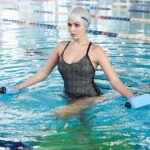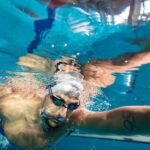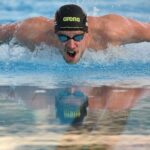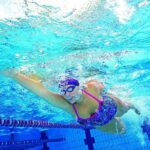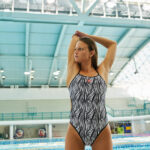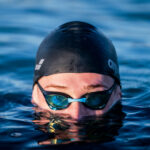Short Course – Interview with Cal Men’s Swimming Head Coach Dave Durden
With the 25m pool, technical aspects such as the turn, push, glide, and sprint naturally become more important – how do you work on these aspects in your preparation for a SC meet?
This is a constant aspect of our training throughout the course of the year. Over the course of a week, we will have anywhere from four to six workouts in a short course format. We will even set-up a 15m course to amplify these technical aspects. We will focus on sets that a required number of kicks off of the wall or strict body positions as the athletes leave the wall for freestyle turns.
How else does training for short course competition differ from long course? What is the main focus of training for short course competition in terms of programme, sets, etc.?
A big difference will be the sustained speed we are looking for in short course preparation compared to long course preparation. We do feel we can allow the athletes to rest a little bit more in the water while keeping an attention to dryland/weight training closer to the meet. We tend to focus on kick counts for our butterfly and backstroke specialists a little more so than in a long course competition.
What specific characteristics/qualities (both physical and technical) should a short course swimmer have compared to a long course one?
A specific characteristic a short course athlete should have compared to a long course athlete is underwater proficiency. Whether they are swimming butterfly or breaststroke, mastery of underwater movement through the kick or pull-out in a strong quality attached to a short course racer.
Are there any “signs” which suggest to a coach that an athlete might have an aptitude/inclination towards SC? If so, what are they, and at what age can they be recognized?
An athlete can show an inclination if they are a talented underwater kicker. That is always a good sign in three of the four strokes. For a breaststroker, it has to do with how they perform their pull-outs. If there is a breaststroker that has really good pull-outs, then they typically will have great performances in a short course environment.
In terms of the relationship between long and short course, what can a swimmer learn from a SC competition? What are the main take-home points? What role do SC competitions play on the swimming calendar?
A swimmer can really benefit from a SC focus and a SC racing focus. We tend to place this importance in the Fall of our calendar year as most of the major competitions (World Cups /Short Course Worlds) fall within that four month timeframe. Athletes can take away improvement in their details. Our program will typically watch a SC world competitions for starts and turns to see how we can improve those details from one year to the next.
How do the race tactics for your swimmers differ between LC and SC? Would they differ for different events?
These tactics from SC to LC and vice versa differ based on athlete and event. We do have athletes that are not IM’ers, but when it comes to SC swimming and a 100 IM, they can be world class. We are typically putting a premium on underwater movement in all four strokes, and making sure that our athletes (especially from a sprint perspective) are staying under the wave created by the big bodies moving through the water.
